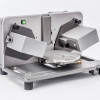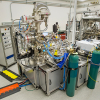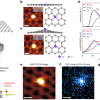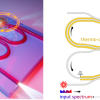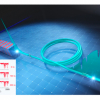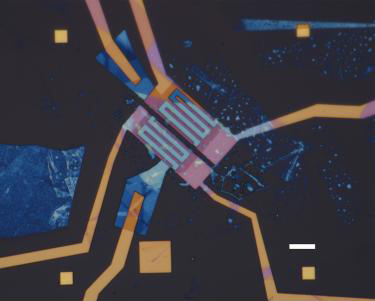
With potential applications that range from detecting greenhouse gases to making self-driving vehicles safer, there has been a great deal of interest in recent years in developing compact, on-chip spectrometers. An on-chip spectrometer would greatly expand the applications and accessibility of the technology. Toward this goal, a team of researchers in the US, Israel and Japan has developed an ultracompact mid-infrared spectrometer. The work is the result of a collaboration between Yale University, Bar-Ilan University, Israel and the National Institute for Materials Science, Japan.
The device incorporates black phosphorus (BP) for a spectrometer that is operational at a 2–9 µm wavelength range, based on a single tuneable photodetector. The material, which is about 10 nm thick, allows users to tune the light–matter interaction to capture the different spectral components—a key to the device’s success. Moreover, an advanced algorithm plays an equally important role in this spectrometer, partly shifting the innate complexity in spectroscopy from hardware to software.
The spectrometer’s dimensions of 9 × 16 µm are comparable to the wavelength of light that it measures. Even if it were possible to make the device smaller, it would not show much improvement due to the diffraction limit.
“It is very exciting to realize such a high-performance spectrometer with the ultimate compactness”, said Professor Doron Naveh of Bar-Ilan University. “We expect that the principle of leveraging advances in hardware and software simultaneously as shown in this work will lead to commercial applications in medicine, agriculture and food quality control.”
“This spectrometer shows an advantage over conventional light-splitting spectrometers because the light doesn’t need to be split into different parts spatially”, said Shaofan Yuan.
Unlike conventional spectrometers, the system does not rely on optical components such as interferometers or tuneable infrared lasers. That opens the possibility for an extreme miniaturisation of spectrometers and could enable on-chip, affordable mid-infrared spectroscopy and spectral imaging.










